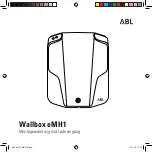
08
8-7
Low Tire Pressure
Warning Light
Low Tire Pressure Position and
Tire Pressure Telltale
ONX4E040019
TMPS is not a substitute for manually
checking the tire pressure with a tire
gauge. Changes in temperature affect
tire pressure. Refer to "Check tire
inflation pressure" in the Maintenance
chapter for proper tire inflation and tire
pressure measurement procedure.
When the tire pressure monitoring
system warning indicators illuminate
and a warning message appears on the
cluster display, one or more of your tires
are significantly under-inflated. The Low
Tire Pressure Position Telltale indicates
which tire is significantly underinflated
by illuminating the corresponding
position light.
If either telltale illuminates, immediately
reduce the vehicle speed, avoid hard
cornering and anticipate increased
stopping distances. Stop and check
your tires as soon as possible. Inflate the
tires to the proper pressure as indicated
on the vehicle’s placard or tire inflation
pressure label located on the driver’s
side center pillar outer panel.
If you cannot reach a service station or
the tire cannot hold the newly added air,
replace the low pressure tire with the
spare tire.
The Low Tire Pressure Telltale remains on
and the TPMS Malfunction Indicator may
blink for one minute and then remain
illuminated (when the vehicle is driven
about 10 minutes at the speed above 15.5
mph (25 km/h)) until you have the low
pressure tire repaired and replaced on
the vehicle.
WARNING
In winter or cold weather, the Low Tire
Pressure Telltale may be illuminated if
the tire pressure was adjusted to the
recommended tire inflation pressure
in warm weather. It does not mean
your TPMS is malfunctioning because
the decreased temperature leads to a
proportional lowering of tire pressure.
When you drive your vehicle from a
warm area to a cold area or from a cold
area to a warm area, or the outside
temperature is greatly higher or lower,
check the tire inflation pressure and
adjust the tires to the recommended tire
inflation pressure.
WARNING
Low pressure damage
Significantly low tire pressure makes
the vehicle unstable and may contribute
to loss of vehicle control and increased
braking distances.
Continued driving on low pressure tires
may cause the tires to overheat and fail.
















































